- Tourist Attractions
An excellent city to walk around in, Goyang
Get to see the many tourist attractions recommended by Goyang City
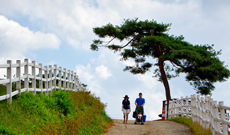
- Nature
- Goyang Eco Park
- Ilsan Lake Park
- Spectacular Musical Fountain
- Janghang Wetland
- Bukhan-san
- Baegundong Valley
- Wondang Horse Racing Academy Ranch
- Gongneung-cheon
- history
- Seooreung(Tombs)
- Seosamneung(Tombs)
- Goryeo Gongyangwangneung
- Tomb of General Choe Yeong
- Tomb of Prince Seongnyeong
- Haengjusan-seong (Haengju-san Fotress)
- Bukhansan-seong (Bukhan-san Fortress)
- Heungguk-sa (Heungguk Temple)
- Sangwun-sa (Sangwun Temple)
- Bongseongam Temple
- Goyang Hyanggyo
- Bamgasi Choga
- Songgang-maeul (Village)
- culture
- Goyang Aramnuri
- Goyang Eowulrimnuri
- Goyang 600th Anniversary Museum
- Goyang Culture Center
- The Latin American Cultural Center
- Securities Museum
- Aerospace Museum
- The National Women’s History Exhibition Hall
- Yujin Folk Museum
- Goyang Gawaji Rice Museum
- theme park
- One Mount
- Plantation
- Aqua Planet ILSAN
- Hyundai Motor Studio Goyang
- Astrocamp
- Goyang Children’s Museum
- Baekseok Kids’ Traffic Park
- Theme Park ZooZoo
- Festivals
- International Horticulture Goyang Korea(April)
- Lake Rose Festival (May)
- Goyang Autumn Flower Festival(September~October)
- Goyang Lake Art Festival(October)
- Goyang Open Air Sculpture Festival (October)
- Goyang Lightblooming Festival (December)
- Goyang International Lake Cartoon Festival (October)
- Haengjusan-seong Sunrise Festiva(January)
- Korea Takjoo Festival(October)
- Experiences
An excellent city to walk around in, Goyang
Get to see the many tourist attractions recommended by Goyang City

- Information
An excellent city to walk around in, Goyang
Get to see the many tourist attractions recommended by Goyang City
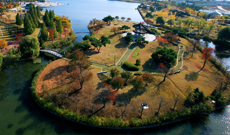
- About GTCA
An excellent city to walk around in, Goyang
Get to see the many tourist attractions recommended by Goyang City
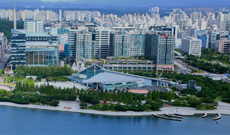
- Information Plaza
History
 Information Most Definitely Here! Unknown to Many! History
Information Most Definitely Here! Unknown to Many! History Information
Prehistoric Times
- The Paleolithic Period: approx. 700,000 BCE
- The Neolithic: 8,000 – 7,000 BCE
- The Bronze Age: 10th Century BCE
Humans are believed to have first appeared during the Paleolithic Age. The stone tools (handaxes, stone cores, hammerstones, and others) found in Ilsan-eup, former Songpo-myeon suggests people began to live in Goyang at least from 50,000 years ago.
The Neolithic Age is the era of agriculture and cattle farming, the first revolution of humankind. In Ilsan New Town (Sinchon Elementary School area in Seongjeo-maeul), relics of Neolithic agriculture and natural environment such as earthenware, rice grains (estimated to be 4,460 years old), and seeds from trees were excavated.
The Bronze Age on the Korean peninsula saw the beginning of the use of metal tools and implements. Arifacts from this period have been found in the hilly area along the streams connecting Gongneung-cheon to Changneung-cheon, Wondang-cheon, and Jangjin-cheon, including the dolmen groups in Munbong-ri and Hwajeong-ri and bronze molds in Seongsa-ri.

The Goryeo Dynasty
- The Three States Period; Foundation of the Three States (Silla founded in 57 BCE, Goguryeo in 37 BCE, Baekjae in 18 BCE)
- Unified Silla Period: approximately 676 CE – 935 CE
The Goyang region began to appear in historical records, after the Neolithic Age, while Baekjae was growing as an ancient state around the Han River area. After King Jangsu of Goguryeo destroyed the capital fortress of Baekjae in 475 CE, the Goyang region became the territory of Goguryeo, which proceeded to build Daleulseong-hyeon and Gaebaek-hyeon in the area. Later, during Year 16 of King Jinheung of Silla (Year 555 CE), a monument commemorating King Jinheung’s tour was set up in Bukhan-san, and Bukhansan-ju was built as a military base.
During the Unified Silla Period, the Goyang region belonged to Hansanju, and the name of Daleulseong-hyeon was changed to Gobong, and Gaebaek-hyeon to Wuwang.

Middle Age
- Goryeo Dynasty: Founded by Wanggeon in 918 CE and lasted until 1392 CE
- Joseon Dynasty: Founded by Lee Seonggye after destroying Goryeo. Lasted from 1392 CE until 1910 CE
In Year 23 of King Taejo of Goryeo (940 CE), Wuwang-hyeon was changed to Haengju with the name ‘Deokyang’ used as an alternative. Later, in Year 9 of King Hyeonjong (1018 CE), Gobong-hyeon and Haengju-hyeon were subjugated to Yangju in Yanggwang-do
In Year 3 of King Taejo of Joseon (1394), Gobong was installed and Buwon-hyeon and Hwangjohyang (the area around former Juyeop-ri and Ilsan-eup) became classified as part of Gobong-hyeon, elevating the status of the area with its own local officer. In Year 13 of King Taejong (1413), the name of the administrative division was changed to Goyang-hyeon, a combination of the first and last syllables of Gobong and Deokyang respectively. In Year 1 of King Seongjong (1470), the division was elevated from ‘hyeon’ to ‘gun.’ However, in Year 10 of King Yeonsan (1504), it was reverted after locals including Ji Eon, Lee Oeul, and Mi Jangsu were executed on account of treason against the King.
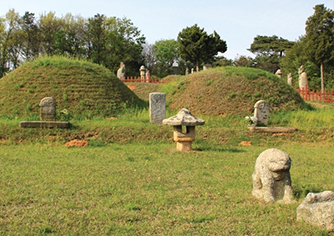
Modern Age (From ‘Opening of the Port’ to Present Day)
- The period from August 1910, when Japanese began the colonialization of Korea, through the Liberation and continuing to the present day
As part of Korea’s modern reform, the regional administrative systems and, thereby, classification of Goyang-gun underwent frequent changes. In 1914, Goyang-gun consisted of 12 ‘myeon’s and 155 ‘ri’s and the Goyang-gun Office was moved to what has now become Chungjeong-ro 1-ga. In 1936, Yongang-myeon, Yeonhee-myeon, and Hanji-myeon were incorporated into Hanseong Department and Goyang-gun Office was moved to Euljiro-1-ga, near the current Dongdaemun district in Seoul. In 1945, after the foundation of the Korean government, the administrative sphere of Seoul City expanded to include part of Goyang, and, as a result, Goyang-gun covered only 6 myeons, ie,, Wondang, Byeokjae, Sindo, Jido, Songpo, and Jung-myeon. In August 1961, the gun office was relocated from Seoul to Wondang-myeon. From the late 1970s to the mid 1980s, Byeokjae, Jido, Hwajeon, Ilsan, and Wondang were promoted to ‘eup’ and Neunggok, Wondang, and Ilsan became urbanized. Later, in April 1989, the government announced the Ilsan New Town project, which covered about 18.5 million meter square of lands covering former Ilsan-ri, Madu-ri, Janghang-ri, Baekseok-ri, andJuyeop-ri, Ilsan-eup. Later, an additional land development project in Jungsan, Tanhyeon, Seongsa, Hwajeong, Neunggok, and Haengsin districts was announced, finally leading the area to be promoted as Goyang-si (city) in February 1992.
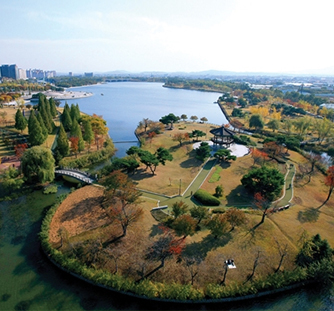
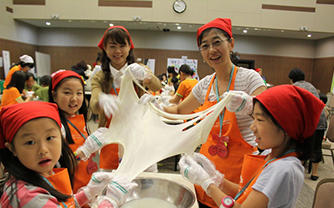
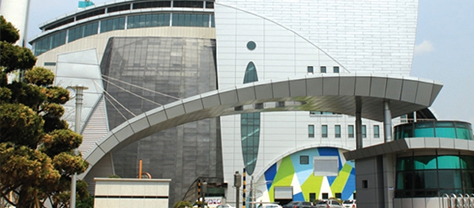
- History of Goyang – source : Goyang City Culture and Tourism website
- Legends and Myths of Goyang – source : Goyang Culture Center

